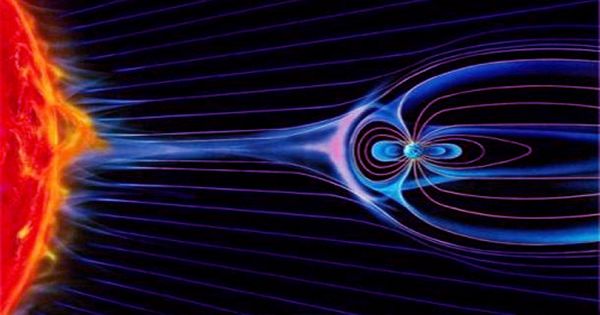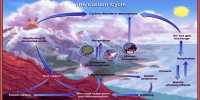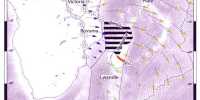Sometimes with earthquakes, sometimes not, they were heard during the New Madrid earthquake of 1811-1812 from January 2020. They are often described as “running” or “rolling” and ocassionally are associated with winter than earthquakes temperature. Unknown boom sounds have been heard in the United States for hundreds of years.
An unusual number of such reports have been published this year around the world, including sounds like Darth Vader breathing in Bratislava and a booming sound heard by Texas residents, although most of these new reports could be attributed to air silence. Lockdown allows people to hear the background weather like wind and thunder, no longer drowning in the noise of traffic and travel. Sultry words are not limited to the United States. Around the world, they are known as the “Bansal Gun” in the Ganges Delta and the Bay of Bengal, “Ian” in Shikoku, Japan, and “Mistpouffers” (Fog Belch) in Belgium.
Loud noises are reported to occur more frequently near Seneca Lake in the Finger Lake area of New York. Known as Seneca guns, the sounds are so loud that they can shatter windows and doors strongly and return to the Charleston earthquake in August 1886 when the sound was heard for several weeks after the incident, many resembling aftershocks. Scientists are now using seismic data from the EarthScope Transportable Array (ESTA) to try to interpret words around Europe, comparing it to word descriptions since 2013.
The team from the University of North Carolina at Chapel Hill returned with news reports from North Carolina, where frequent noises were reported. The team is hopeful that it will be able to verify the words with seismo-acoustic data taken from the ESTA. They did not find any similarity with the earthquake.
Researcher Eli Bird told Live Science, “Generally speaking, we believe this is an atmospheric phenomenon – we don’t think it came from seismic activity.” “We assume it’s propagating through the atmosphere rather than the land.” The researchers, who presented their findings at the annual meeting of the American Geophysical Union in December, focused on listening to infrasound data – a low-frequency term that is not audible to humans. They received signals – 1 to 10 seconds long, live science report – related to Booms.m
However, we are not too close to an explanation for the noise, or whether the noise is due to similar events around the world. There may be a sonic boom from the aircraft breaking the sound barrier rather than many unknown natural causes. Possible explanations for other events range from stormy waves and tsunamis to widening in a certain direction and the burning of methane gas released from the methane hydrate bed.
A promising possibility is that the bolides in the upper atmosphere – the meteoroids – produce a sonic boom, where the meteor disappears and is not noticed until we hear the sound of it forming. For now, the words remain unresolved until more data is collected.















